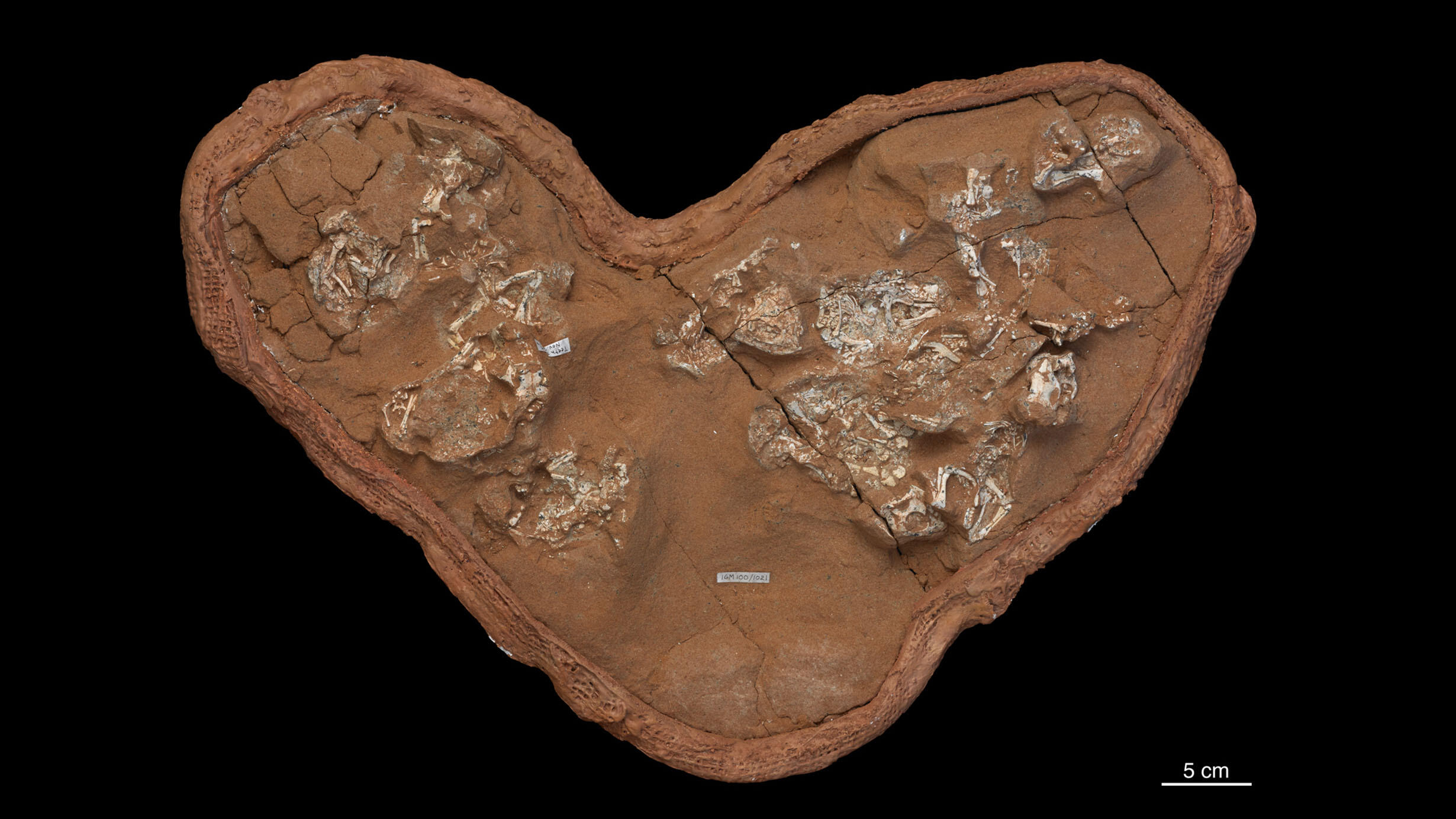 The clutch of fossilized Protoceratops eggs and embryos examined in this study was discovered in the Gobi Desert of Mongolia at Ukhaa Tolgod.
The clutch of fossilized Protoceratops eggs and embryos examined in this study was discovered in the Gobi Desert of Mongolia at Ukhaa Tolgod.M. Ellison /© AMNH
The first dinosaurs laid soft-shelled eggs that resembled those of a turtle, a new study led by the Museum and Yale University has found, contradicting the long-held thought that all dinosaur eggs were hard-shelled. It also suggests that calcified eggs evolved independently at least three times in the dinosaur family tree.
“Over the last 20 years, we’ve found dinosaur eggs around the world. But for the most part, they only represent three groups—theropod dinosaurs, which includes modern birds, advanced hadrosaurs like the duck-bill dinosaurs, and advanced sauropods, the long-necked dinosaurs,” said Mark Norell, chair and Macaulay Curator in the Museum’s Division of Paleontology and lead author of the study, which is published today in the journal Nature. “At the same time, we’ve found thousands of skeletal remains of ceratopsian dinosaurs, but almost none of their eggs. So why weren’t their eggs preserved? My guess—and what we ended up proving through this study—is that they were soft-shelled.”
Amniotes—the group that includes birds, mammals, and reptiles—produce eggs with an inner membrane or “amnion” that helps to prevent the embryo from drying out. Some amniotes, such as many turtles, lizards, and snakes, lay soft-shelled eggs. Others, such as birds, lay eggs with hard, heavily calcified shells. Because modern crocodilians and birds, which are living dinosaurs, lay hard-shelled eggs, it was long assumed that all non-avian dinosaurs laid hard eggs.
© Jasmina Wiemann
The researchers studied embryo-containing fossil eggs belonging to two species of dinosaur: Protoceratops, a sheep-sized plant-eating dinosaur that lived in what is now Mongolia between about 75 and 71 million years ago, and Mussaurus, a long-necked, plant-eating dinosaur that grew to 20 feet in length and lived between 227 and 208.5 million years ago in what is now Argentina.
© Diego Pol
In the well-preserved Protoceratops specimen, researchers noticed a black-and-white egg-shaped halo associated with skeletal embryos in the fossilized clutch. When the scientists took a closer look with a suite of sophisticated geochemical methods, they found evidence of the proteinaceous membrane that makes up the innermost eggshell layer of all modern archosaur eggs, those of birds and crocodilians. The same was true for the Mussaurus specimen.
When researchers compared the biomineralization signature of the dinosaur eggs with eggshell data from other animals, they determined that the Protoceratops and Mussaurus eggs were not biomineralized but rather leathery and soft.
© Jasmina Wiemann
“It’s an exceptional claim, so we need exceptional data,” said study author and Yale graduate student Jasmina Wiemann. “We had to come up with a brand-new proxy to be sure that what we were seeing was how the eggs were in life, and not just a result of some strange fossilization effect.”
With data on the chemical composition and mechanical properties of eggshells from 112 other extinct and living relatives, the researchers constructed a “super tree” to track the evolution of the eggshell structure and properties through time. They found that hard-shelled, calcified eggs evolved independently at least three times in dinosaurs.
Soft eggshells are sensitive to water loss and would not hold up well under the weight of a brooding parent. Because of this, the researchers propose that the eggs were likely buried in moist soil or sand and incubated with heat from decomposing plant matter, much like what some reptiles do with their eggs today.